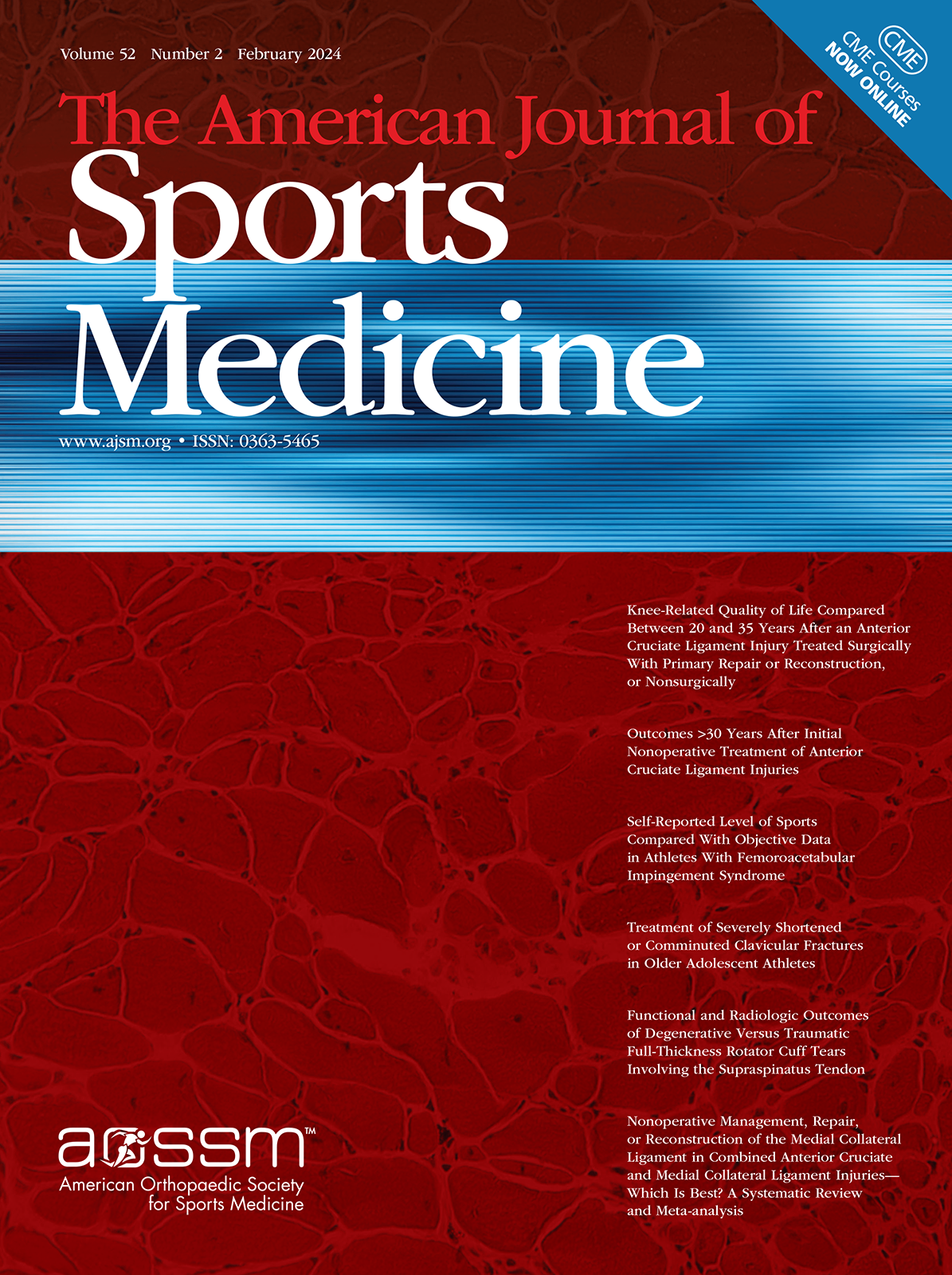
Bioabsorbable arrows versus screws in meniscal repair

Bioabsorbable arrows versus screws in meniscal repair
All-inside meniscal repair with bioabsorbable meniscal screws or with bioabsorbable meniscus arrows: A prospective, randomized clinical study with 2-year results
Am J Sports Med. 2010 Nov;38(11):2211-7.Did you know you're eligible to earn 0.5 CME credits for reading this report? Click Here
Synopsis
42 patients undergoing all-inside meniscal repair were randomized to be treated with bioabsorbable meniscal arrows or meniscal screws, with the hypothesis that similar clinical outcomes would be seen at short-term follow-up for meniscal repair. At an average follow-up time of 27 months, the clinical outcomes, measured Lysholm score and the International Knee Documentation Committee (IKDC) knee score, were similar, except the arrow group showed significantly greater chondral damage.
Was the allocation sequence adequately generated?
Was allocation adequately concealed?
Blinding Treatment Providers: Was knowledge of the allocated interventions adequately prevented?
Blinding Outcome Assessors: Was knowledge of the allocated interventions adequately prevented?
Blinding Patients: Was knowledge of the allocated interventions adequately prevented?
Was loss to follow-up (missing outcome data) infrequent?
Are reports of the study free of suggestion of selective outcome reporting?
Were outcomes objective, patient-important and assessed in a manner to limit bias (ie. duplicate assessors, Independent assessors)?
Was the sample size sufficiently large to assure a balance of prognosis and sufficiently large number of outcome events?
Was investigator expertise/experience with both treatment and control techniques likely the same (ie.were criteria for surgeon participation/expertise provided)?
Yes = 1
Uncertain = 0.5
Not Relevant = 0
No = 0
The Reporting Criteria Assessment evaluates the transparency with which authors report the methodological and trial characteristics of the trial within the publication. The assessment is divided into five categories which are presented below.
3/4
Randomization
3/4
Outcome Measurements
4/4
Inclusion / Exclusion
4/4
Therapy Description
3/4
Statistics
Detsky AS, Naylor CD, O'Rourke K, McGeer AJ, L'Abbé KA. J Clin Epidemiol. 1992;45:255-65
The Fragility Index is a tool that aids in the interpretation of significant findings, providing a measure of strength for a result. The Fragility Index represents the number of consecutive events that need to be added to a dichotomous outcome to make the finding no longer significant. A small number represents a weaker finding and a large number represents a stronger finding.
Why was this study needed now?
The recommended treatment for meniscal tears is to repair the tear and to save the menisci whenever possible. The focus now has shifted towards all-inside meniscal repair techniques.At present, there is a lack of prospective randomized clinical studies that compare these different all-inside meniscal repair devices. In a 2 year study period, this trial compared 2 such techniques: repair with the bioabsorbable Trinion meniscal screw and repair with the bioabsorbable meniscus arrow.
What was the principal research question?
Are there any differences in clinical and radiographic outcomes of an all inside meniscal repair with the use of bioabsorbable meniscal screw and bioabsorbable meniscal arrow 2 years after surgery?
What were the important findings?
- The Lysholm score, the IKDC function score, and the IKDC final score reported no significant difference between the groups preoperatively and at the 2-year follow-up.
- In the meniscal arrow group, mild chondral damage (grade I) was observed in 5 patients in the medial femoral condyle on the same side as the meniscal repair, while In the screw group, no chondral damage was observed (p = 0.008).
- 17% of the screw group and 30% in the arrow group had failures (P = 0.242)
- The meniscal healed in 14 patients (8 in the screw group and 6 in the arrow group), and as partially healed in 4 patients (3 in the screw group and 1 in the arrow group).
- No significant differences were seen in tenderness in the joint line by McMurray test at 2 year follow up.
- All knees were stable and similar proportion of patients were able to carry out same level sporting activity (15 vs 12) or at a lower level activity (2 in each group)
What should I remember most?
All-inside meniscal repair with bio-absorbable meniscal screws and arrows resulted in similar clinical outcomes. However, significantly more chondral damage was observed when patients received arrows for fixation. The authors discontinued the study for ethical reasons based on the observed chondral damage findings.
How will this affect the care of my patients?
According to the study findings, it was suggested that meniscal repair performed with bioabsorbable meniscal screws resulted in better results than the meniscal repair with bioabsorbable meniscus arrows. The use of meniscal arrows for fixation was associated with significant chondral damage.
Learn about our AI Driven
High Impact Search Feature
Our AI driven High Impact metric calculates the impact an article will have by considering both the publishing journal and the content of the article itself. Built using the latest advances in natural language processing, OE High Impact predicts an article’s future number of citations better than impact factor alone.
Continue



 LOGIN
LOGIN

Join the Conversation
Please Login or Join to leave comments.